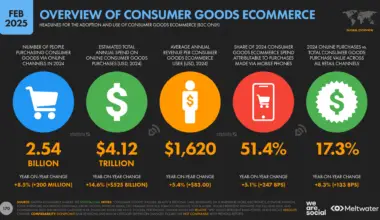Introduction
In the ever-evolving landscape of retail, online shopping has become a dominant force, reshaping how consumers interact with brands and make purchases. As we navigate through 2023, it’s essential to stay updated on the latest online shopping trends that are influencing consumer behavior and redefining the online shopping experience. In this blog post, we will delve into the most significant trends in online shopping, explore how they are transforming online stores, and discuss what the future holds for this dynamic industry.
The Rise of Social Commerce
One of the most notable trends in online shopping is the rise of social commerce. Platforms like Instagram, Facebook, and TikTok have integrated shopping features that allow users to purchase products directly through their feeds. This seamless integration of social media and e-commerce has created a new shopping experience where consumers can discover products in a more organic and engaging way.
Social commerce leverages user-generated content, influencer marketing, and targeted advertising to drive sales. Brands are increasingly collaborating with influencers to showcase their products, creating a sense of authenticity and trust. As a result, consumers are more likely to make purchases based on recommendations from their favorite social media personalities.
Personalization and Customization
Another significant trend in online shopping is the emphasis on personalization and customization. Consumers today expect a tailored shopping experience that caters to their individual preferences and needs. Online stores are utilizing advanced data analytics and artificial intelligence to gather insights about customer behavior, enabling them to offer personalized product recommendations, targeted promotions, and customized shopping experiences.
For instance, many online retailers now use algorithms to analyze past purchases and browsing history, allowing them to suggest products that align with a customer’s interests. This level of personalization not only enhances the shopping experience but also increases customer loyalty and retention.
Sustainability and Ethical Shopping
As consumers become more environmentally conscious, sustainability has emerged as a crucial factor in online shopping trends. Shoppers are increasingly seeking out brands that prioritize ethical practices, sustainable sourcing, and eco-friendly products. Online stores are responding to this demand by highlighting their commitment to sustainability, offering eco-friendly product lines, and implementing transparent supply chain practices.
Brands that embrace sustainability not only attract environmentally conscious consumers but also build a positive brand image. This trend is likely to continue growing as more shoppers prioritize ethical considerations in their purchasing decisions.
The Impact of Augmented Reality (AR)
Augmented reality (AR) is revolutionizing the online shopping experience by allowing consumers to visualize products in their own environment before making a purchase. Retailers are increasingly incorporating AR technology into their online stores, enabling customers to try on clothes virtually, see how furniture fits in their living spaces, or even test makeup shades on their skin.
This immersive shopping experience reduces uncertainty and enhances customer confidence in their purchasing decisions. As AR technology continues to advance, we can expect to see even more innovative applications in the online shopping space.
Mobile Shopping Dominance
With the proliferation of smartphones, mobile shopping has become a dominant trend in online retail. Consumers are increasingly using their mobile devices to browse and make purchases, leading to the rise of mobile-optimized websites and apps. Retailers are investing in mobile-friendly designs, fast-loading pages, and streamlined checkout processes to cater to this growing audience.
Moreover, mobile shopping apps often offer features such as push notifications, personalized deals, and easy access to customer support, enhancing the overall shopping experience. As mobile technology continues to evolve, we can anticipate further innovations that will shape the future of online shopping.
Subscription Services and Membership Models
Subscription services and membership models have gained significant traction in recent years, offering consumers convenience and exclusive benefits. From beauty boxes to meal kits, these services provide curated products delivered directly to customers’ doors on a regular basis. This trend not only fosters customer loyalty but also creates a steady revenue stream for businesses.
Online stores are also adopting membership models that offer perks such as free shipping, early access to sales, and exclusive discounts. By providing added value, retailers can enhance customer satisfaction and encourage repeat purchases.
The Role of Artificial Intelligence (AI)
Artificial intelligence is playing an increasingly vital role in shaping online shopping trends. From chatbots that provide instant customer support to AI-driven product recommendations, technology is enhancing the overall shopping experience. Retailers are leveraging AI to analyze consumer behavior, optimize inventory management, and streamline operations.
AI-powered tools can also help retailers predict trends and consumer preferences, allowing them to stay ahead of the competition. As AI technology continues to advance, we can expect even more innovative applications that will further transform the online shopping landscape.
The Importance of User Experience (UX)
In the competitive world of online shopping, user experience (UX) has become a critical factor in driving sales. Consumers expect a seamless and enjoyable shopping experience, from browsing products to completing their purchases. Online stores are focusing on optimizing their websites and apps to ensure fast loading times, intuitive navigation, and easy checkout processes.
Additionally, retailers are investing in high-quality product images, detailed descriptions, and customer reviews to enhance the shopping experience. A positive UX not only encourages customers to complete their purchases but also increases the likelihood of repeat visits.
Conclusion
As we look ahead, it’s clear that online shopping trends will continue to evolve, driven by technological advancements and changing consumer preferences. From the rise of social commerce to the integration of augmented reality, these trends are reshaping the way we shop online. Retailers that embrace these changes and prioritize customer experience will be well-positioned to thrive in the competitive online marketplace.
Staying informed about the latest online shopping trends is essential for both consumers and retailers alike. By understanding these trends, consumers can make informed purchasing decisions, while retailers can adapt their strategies to meet the demands of the modern shopper. The future of retail is bright, and the possibilities for online shopping are limitless.

